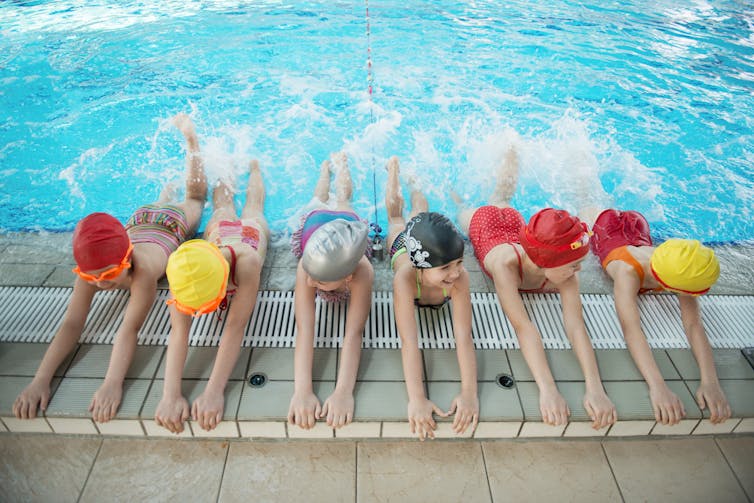
Michael McCluskey, Keele University
Most parents are aware that physical activity is good for children – as it can help to improve their sense of self and have a positive impact on their mental health and well-being. But it’s less well known that being fit and active can also help to boost children’s academic performance.
Our recent review of primary school children from Stoke-on-Trent, England, shows that children who are more active perform better in key stage one results in reading, writing and mathematics than less active children – achieving grades that were either average or above average for each subject.
We also looked at how the children’s weight and height changed over the school year in our review. All the children gained weight, but less active children appeared to gain weight at a steeper rate than active children. This may mean these children – who currently have a normal weight and body mass – may be at risk of becoming overweight or obese in the future.
Not enough exercise
A report from Sport England shows that children who enjoy exercise, have confidence in their physical abilities and understand why exercise is important, are more likely to be active regularly. The same report also shows that these children do, on average, twice as much physical activity compared with children who don’t enjoy sport and exercise.
The Department of Health recommends children do at least 60 minutes of physical activity every day – but many children fail to meet these recommendations. This is in keeping with national figures that show only 17.5% of English, 38% of Scottish, 51% of Welsh and 12% of Northern Irish children meet the recommended minimum exercise levels.
Read more:
We asked children why they don’t get enough exercise – here’s what they said
But inactivity is not just a problem in the UK. Levels of childhood physical activity have recently been described as a global crisis by the World Health Organisation. Increasing urbanisation, changing patterns in transport, increased use of technology and high levels of poverty are considered to be reasons for the decline.
Of course, not all children naturally love exercise – and many dread PE lessons. Indeed, research shows that children who get regular encouragement and who have access to affordable facilities are more likely to be and stay active.
Be a role model
Given that our research shows the impact physical activity can have on academic performance and growth, it’s clear that children need to be encouraged to be active and given time to play regularly at home, in school and in the local community.
Children should walk more, run, cycle, use their scooter, go to their local playgrounds, dance, swim and play sports. Children should also be encouraged to travel to school on foot or by bike where possible and sit less often and for shorter periods of time.

Rawpixel.com/Shutterstock
Read more:
When kids run for 15 minutes in school every day, here’s what happens to their health
Importantly, children also need to have positive role models. They need to see parents, family members, teachers and members of the community, enjoying being physically active on a regular basis.
This is important because children who are active regularly during childhood are more likely to develop into adults who are active and exercise. And adults who exercise regularly are more likely to live happier and healthier lives than those who do not.![]()
Michael McCluskey, Lecturer in Physiotherapy, Keele University
This article is republished from The Conversation under a Creative Commons license. Read the original article.




17 Comments
Pingback: fortigate-40f
Pingback: costco tire
Pingback: auto swiper
Pingback: baixar vídeos online
Pingback: buy psilocybe azurescens mushrooms
Pingback: Buy MDMA Crystal with reliable shipping
Pingback: ต่อผม
Pingback: https://stealthex.io
Pingback: Ulthera
Pingback: 토토3+3
Pingback: :
Pingback: โบท็อกราคา
Pingback: Diyala/baqubah/university/universal
Pingback: Nexus Market
Pingback: เว็บบอลสด
Pingback: ของเล่นสนาม
Pingback: online chat